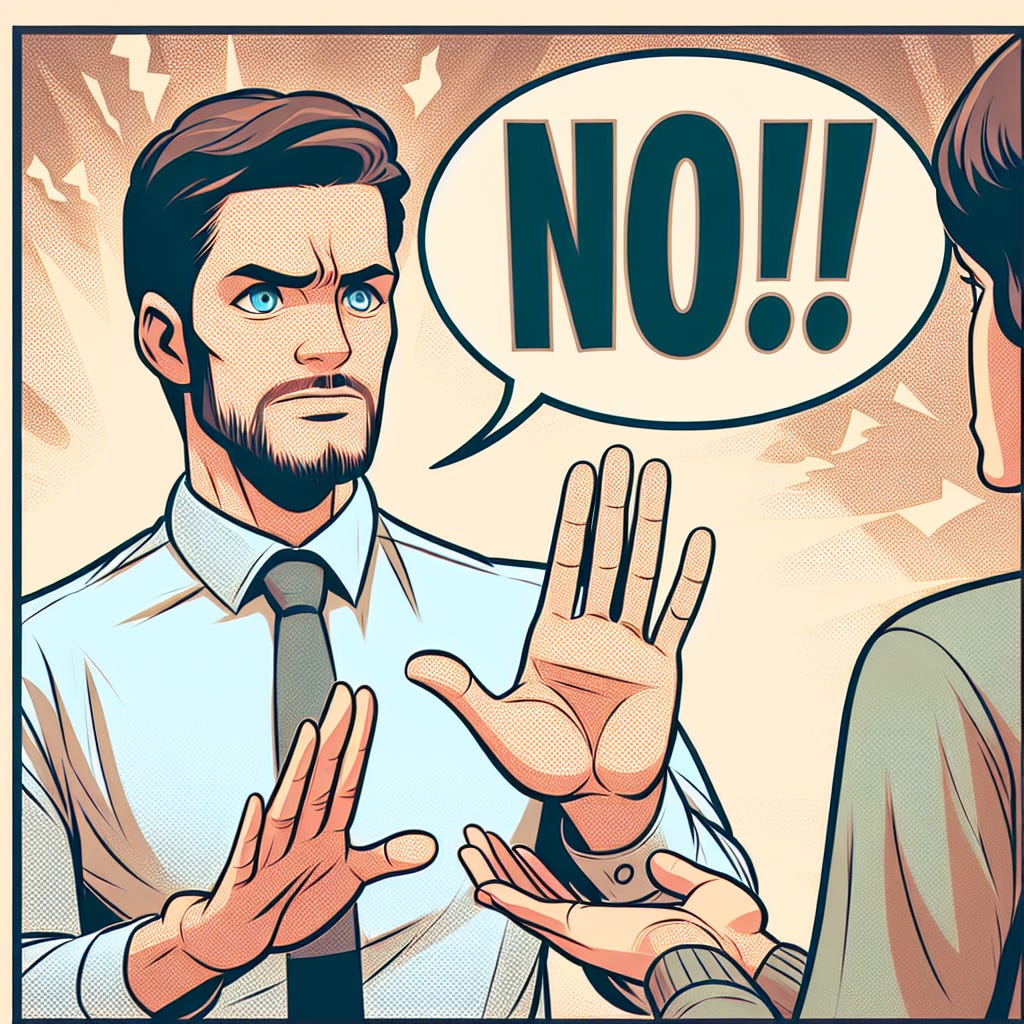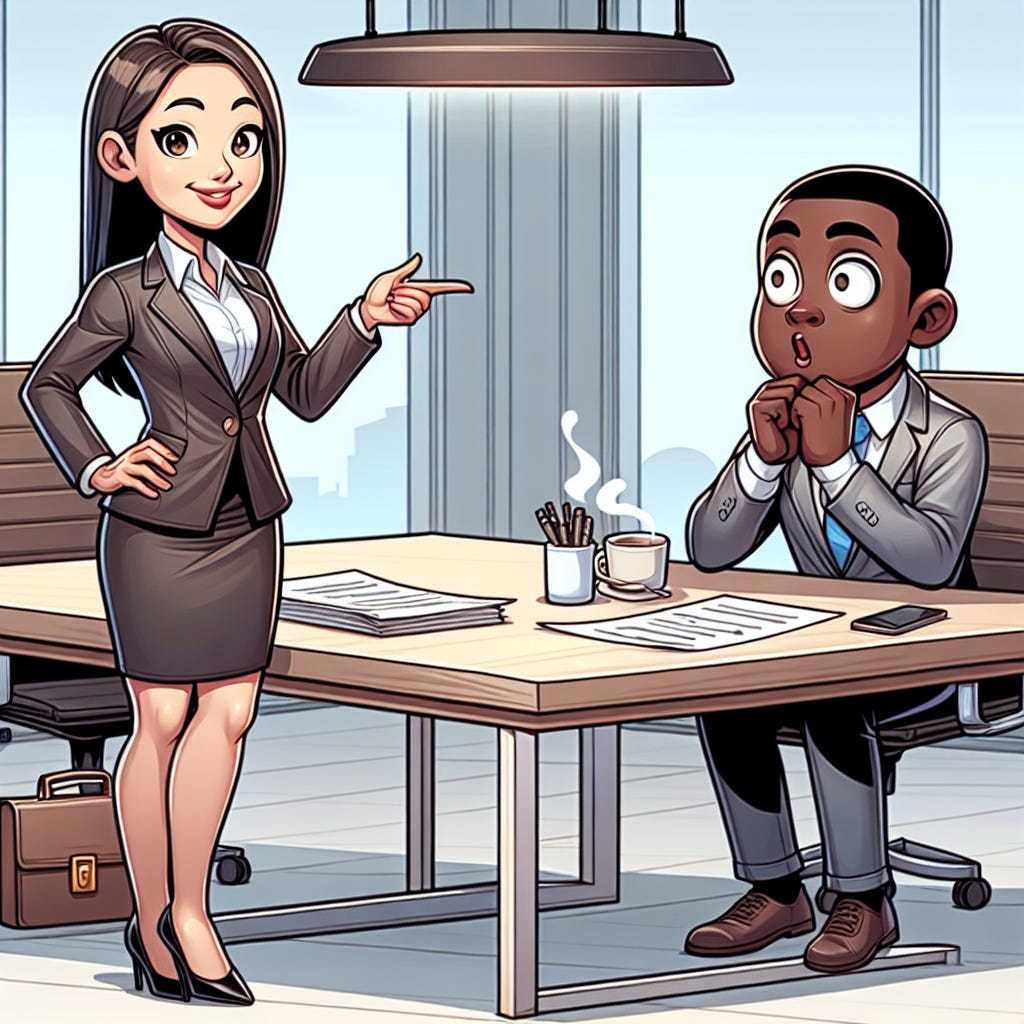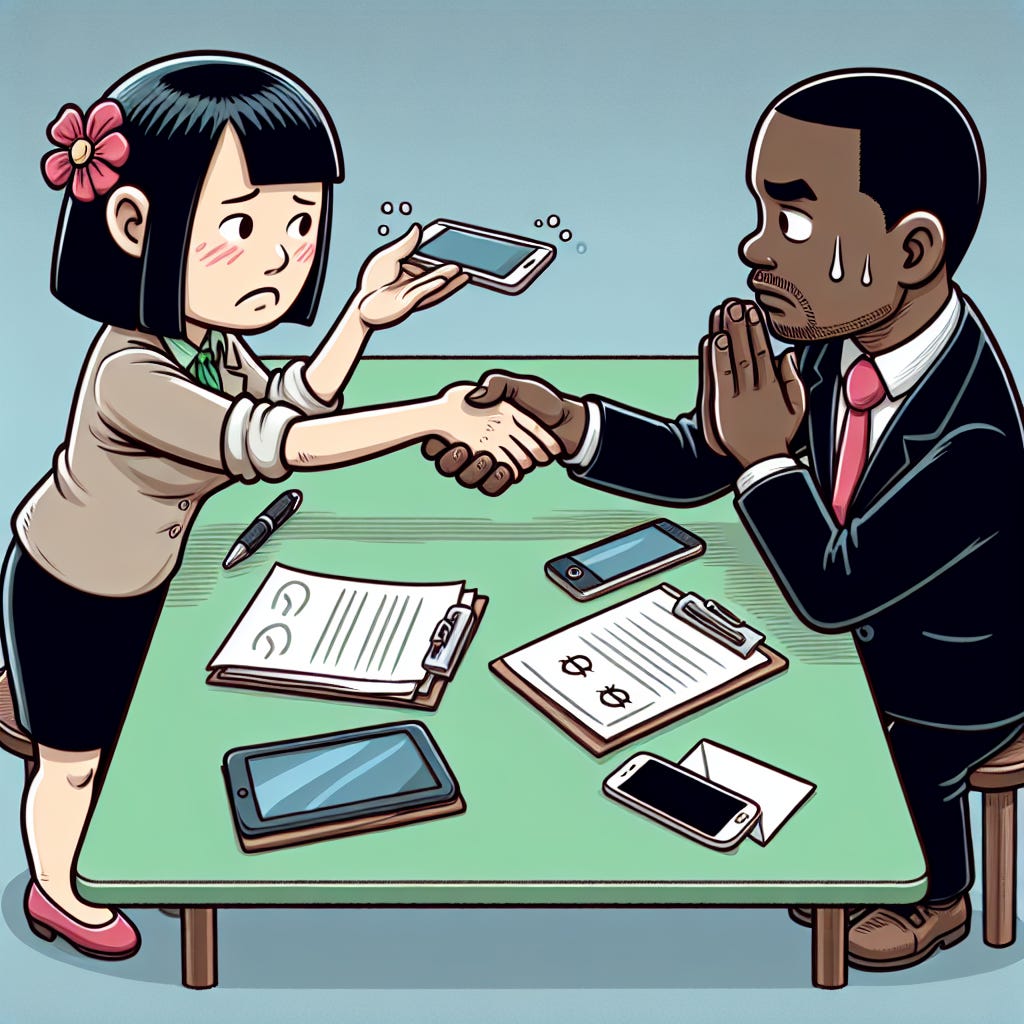Welcome to the second part of my series on High-Impact Negotiation Frameworks. In the first post here, I explored foundational negotiation principles that are the bedrock for effective negotiation. Today, I will delve into early-stage tactics that set the stage for successful negotiations. Using these tactics, you can put yourself in a favourable position from the outset and create a strong foundation for the negotiation process.
The Importance of Early-Stage Tactics
Early-stage tactics are akin to the opening gambits in chess. How you start a negotiation defines how it will proceed in the middle and end games and what resources will be available later in the process. By employing these strategies, you can gain valuable information, build rapport, and create leverage. The initial negotiation phase is about setting the stage for a successful outcome, and these tactics will help you do just that.
Early-Stage Tactic 1: Ask for More Than You Expect to Get
One of the oldest and most effective negotiation tactics is to ask for more than you expect to get. This tactic serves multiple purposes:
It gives you room to make concessions without sacrificing your actual goals.
It sets a higher anchor point, influencing the other party's perception of what is reasonable.
One of the negotiation goals is to leave the other person satisfied that they did well.
The more they can drive your price down or move you from your original position, the more satisfied they will feel. This tactic is about getting the best material value for you and giving the other person the best emotional value of 'winning' at the end.
It would help if you aimed for your maximum plausible position or even a bit higher as a starting point. Don't be shy or ashamed of starting high—you may get it. The less you know about the other side, the higher your starting position should be because a) you may be off in your assumptions and may get the higher number, and b) you will appear more cooperative if you can make more significant concessions later.
The next question is: If you're asking for more than you expect to get, how much more should you ask for? The answer is that you should bracket your objective. Your initial proposal should be an equal distance on the other side of your aim as their proposal. For example, if a car dealer is asking 15,000 for a car and you want to buy it for 13,000, make an opening offer of 11,000. Now, you have established the negotiating range.
Example: Imagine you are selling a piece of equipment that you believe is worth 15,000. Instead of asking for 15,000, you ask for 20,000. This way, even if the buyer negotiates you down, you are more likely to end up closer to your desired price. Also, starting high allows you to make concessions, making the other party feel like they are getting a better deal.
In Summary:
Always start with a higher number than you expect to settle for.
This tactic gives you room to manoeuvre and make concessions.
A higher anchor point influences the other party's perception of value.
You might get what you ask for.
It raises the perceived value of what you're offering.
It prevents the negotiation from deadlocking.
It creates a climate in which the other side feels they won.
Early-Stage Tactic 2: Never Say Yes to the First Offer
Saying yes to the first offer can be tempting, especially if it seems reasonable. However, accepting the first offer can leave value on the table and signal to the other party that they could have gotten a better deal. The reason you should never say yes to the first offer (or counter-offer) is that it automatically triggers two thoughts in the other person's mind: 1) "I could have done better" and 2) "Something must be wrong."
By rejecting the first offer, you encourage further negotiation and demonstrate that you are not desperate. Refrain from falling into the trap of saying yes too quickly. Once offered something, it is yours already—it becomes a baseline from where you start. And you can be as ambitious in your negotiation from here as you would have been from a lower baseline start.
Example: You are negotiating a salary for a new job. The employer offers you 70,000, which is within your acceptable range. Instead of accepting immediately, you respond with, "Thank you for the offer. I was hoping for something closer to 80,000, given my experience and the market rate." This response opens the door for further negotiation and a better offer.
In Summary:
Never accept the first offer, even if it seems reasonable.
Rejecting the first offer encourages further negotiation.
Demonstrate that you are not desperate and are willing to negotiate.
Use the initial offer as a baseline to negotiate ambitiously.
Early-Stage Tactic 3: Flinch at Proposals
Flinching is a powerful psychological tactic that involves showing a strong emotional reaction to a proposal. This reaction can make the other party reconsider their position and potentially make a more favourable offer. All humans absorb data with all senses. Giving a visual cue like a flinch and a verbal rejection gives sensory input from two senses, and people believe it more readily.
Example: You are negotiating the price of a car, and the dealer quotes 25,000. You flinch by widening your eyes and saying, "Wow, that's quite a bit higher than I expected." This reaction can make the dealer rethink their price and offer discounts or additional benefits.
In Summary:
Flinching shows a strong emotional reaction to a proposal.
This tactic can make the other party reconsider their position.
Use simple gestures or expressions to convey surprise or shock.
Flinching gives sensory input from two senses, making it more impactful.
Early-Stage Tactic 4: Avoid Confrontational Negotiation
Confrontational negotiation can create tension and hinder the negotiation process. Instead, aim for a collaborative approach to find mutually beneficial solutions. Building rapport and demonstrating empathy can create a positive atmosphere that facilitates productive negotiation.
Be careful what you say at the beginning. If the other person takes a position with which you disagree, don't argue. Arguing constantly intensifies the other person's desire to prove themselves right. You're much better off initially agreeing with the other person and then turning it around using the Feel, Felt, Found formula.
Respond with, "I understand exactly how you feel about that. Many other people have felt exactly the same way as you do right now. [Now you have diffused that competitive spirit. You're not arguing with them; you're agreeing with them.] But you know what we have always found? When we take a closer look at it, we have always found that...." Get in the habit of agreeing and then turning it around. Feel, Felt, Found gives you time to recover your composure, and you will know exactly what to say.
Example: You are negotiating a contract with a new client. The client says, "Your timeline for delivery is too long. We need it done in half the time." Instead of arguing, you respond, "I understand exactly how you feel about that. Many other clients have felt exactly the same as you do. But you know what we have always found? Looking closer at it, we have always found that a longer timeline ensures higher quality and fewer issues post-delivery. Let's see how we can balance your need for speed with our commitment to quality."
In Summary:
Avoid aggressive negotiation to prevent tension.
Aim for a collaborative approach that benefits both parties.
Build rapport and demonstrate empathy to create a positive atmosphere.
Use the Feel, Felt, Found formula to diffuse competitive spirit and turn the conversation around.
Early-Stage Tactic 5: The Reluctant Seller and the Reluctant Buyer
The reluctant seller and buyer tactics involve hesitation or reluctance to make a deal. This tactic can create a sense of urgency and encourage the other party to make concessions to close the deal.
The Reluctant Seller technique expands the negotiating range before the negotiating begins. By playing the Reluctant Seller, you may move the other party to the mid-point, or even beyond the high point of their negotiating range, before the negotiations start. When selling, play the Reluctant Seller. Turn this around and consider the Reluctant Buyer. Put yourself on the other side of the desk for a moment. Let's say you're in charge of buying new computer equipment for your company. How would you get a salesperson to give you the lowest possible price?
Let the salesperson come in and have her go through her entire presentation. I would ask all the questions I could possibly think of, and when I finally couldn't think of another thing to ask, I would say, "I really appreciate all the time you've taken. You've obviously put a lot of work into this presentation, but unfortunately, it's just not the way we want to go; however, I sure wish you the best of luck." I would pause to examine the crestfallen expression on the salesperson's face. I'd watch her slowly package her presentation materials. Then, at the very last moment, just as her hand hit the doorknob on the way out, I would come back with a magic expression. There are some magic expressions in negotiating. If you use them at exactly the right moment, the predictability of the other person's response is amazing. I'd say, "You know, I really do appreciate the time you took with me. Just to be fair to you, what is the very lowest price you'd take?" She'll give away half her negotiating range just because you played Reluctant Buyer.
Example: You are selling a used laptop, and a potential buyer shows interest. Instead of immediately agreeing to sell, you say, "I'm not sure if I want to part with it just yet. It's been very reliable." This hesitation makes the buyer more eager to close the deal and offer a higher price.
In Summary:
Always play Reluctant Seller.
Look out for the Reluctant Buyer.
Playing this tactic is a great way to squeeze the other side's negotiating range before the negotiation starts.
The other person will typically give away half of their negotiating range just because you use this.
When it's used on you, get the other person to commit, go to Higher Authority, and close with Good Guy/Bad Guy.
Real-Life Applications of Early-Stage Tactics
To illustrate the effectiveness of these early-stage tactics, let's consider a few real-life scenarios:
Scenario 1: Business Negotiation: You are negotiating a partnership agreement with another company. By asking for more than you expect to get, you set a high anchor point. When the other company makes their first offer, you wait to accept it immediately and flinch to show surprise. You maintain a collaborative approach throughout the negotiation and show reluctance to finalize the deal quickly. These tactics help you secure more favourable terms and build a strong partnership.
Scenario 2: Salary Negotiation: You are negotiating a raise with your employer. You start by asking for a higher salary than you expect to receive. When your employer makes the first offer, which is higher than your original expectation, you avoid accepting it immediately and express surprise at the amount. You then engage in a collaborative discussion, highlighting your contributions and expressing your commitment to the company. By showing reluctance to accept the first offer, you create a sense of urgency and increase your chances of securing a higher raise.
Scenario 3: Purchasing a Car You are buying a used car from a private seller. You start by asking for a lower price than you are willing to pay. When the seller makes the first offer, you wait to accept it immediately and flinch to show surprise. You then engage in a collaborative discussion, expressing your interest in the car but showing reluctance to finalize the deal quickly. These tactics help you negotiate a lower price and secure additional benefits, such as a warranty or maintenance package.
Conclusion
Early-stage tactics are essential for setting the stage for successful negotiations. By asking for more than you expect to get, never saying yes to the first offer, flinching at proposals, avoiding confrontational negotiation, and using the reluctant seller and reluctant buyer tactics, you can create a strong foundation for the negotiation process. These strategies help you gain valuable information, build rapport, and create leverage, ultimately leading to better outcomes.
Summary of Articles 1 and 2
In the first article, I covered vital negotiation principles that serve as the foundation for effective negotiation:
Get the Other Side to Commit First
Acting Dumb Is Smart
Don't Let the Other Side Write the Contract
Read the Contract Every Time
Understand and Decode Funny Money
People Believe What They See in Writing
Concentrate on the Issues
Always Congratulate the Other Side
In this second article, I delved into early-stage tactics that set the stage for successful negotiations:
Ask for More Than You Expect to Get
Never Say Yes to the First Offer
Flinch at Proposals
Avoid Confrontational Negotiation
The Reluctant Seller and the Reluctant Buyer
Stay tuned for the next post in my series, where I will explore middle-stage tactics that help you maintain momentum and keep the negotiation moving in your direction. Start using these frameworks consciously, and you will see concrete results and improved negotiation outcomes.
Sources:
These frameworks have been developed and honed through real-life experience negotiating across markets and industries.
They have been informed by various training programs and books - chiefly Roger Dawson's amazing 'Secrets of Power Negotiating', "You Can Negotiate Anything" by Herb Cohen and "Getting to Yes: Negotiating Agreement Without Giving In" by Roger Fisher, William Ury, and Bruce Patton.
If you found this post valuable, please share it with others
Check out some of my other Frameworks on the Fast Frameworks Substack:
Check out some of my other Frameworks on the Fast Frameworks Substack:
High-impact negotiation frameworks 1/5 - Negotiating principles
Milestone 53 - reflections on completing 66% of the journey
The exponential growth framework
Fast Frameworks: A.I. Tools - Chatbots
Video: A.I. Frameworks by Aditya Sehgal
The job satisfaction framework
Fast Frameworks - A.I. Tools - Suno.AI
The Set Point Framework for Habit Change
The Plants Vs Buildings Framework
Spatial computing - a game changer with the Vision Pro
The 'magic' Framework for unfair advantage









